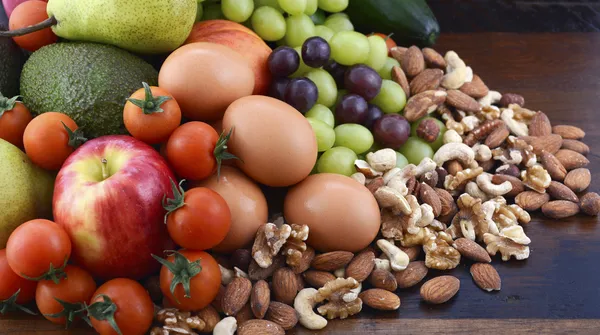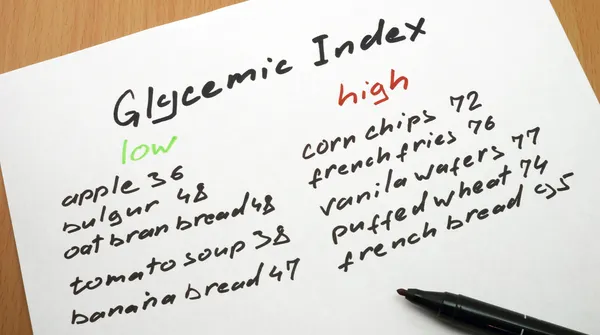Glycemic Index is a measurement of carbohydrate-containing foods and their impact on blood sugar. In simple words, instead of counting the total amount of carbohydrate levels in a food, the GI measures the actual impact of these foods on our blood sugar. It has managed to be a key player in the prevention and management of diabetes, cardiovascular diseases and even some types of cancer.

Why is Glycemic Index Important?
The Glycemic Index has been able to decrease the risk of cardiovascular disease, prevention and management of diabetes, metabolic syndrome, stroke, depression and cancers of the breast, pancreas, colon and prostate.
Hence, diets prepared on the basis of low GI will have food which has low glucose levels. For example, kidney beans and lentils have less starch, which would be recommended in diets.

How is the GI measured?
According to the definition, GI ranks food on an ascending scale of 1-100 by measuring the actual blood sugar released on consumption. On the basis of this, all foods are classified into three general categories:-
- High glycemic index foods (GI 70 or above), induce an immediate rise in the sugar level.
- Intermediate glycemic index foods (GI 55-69) cause an average rise in blood sugar.
- Low glycemic index foods (GI 55 or below) cause a gradual rise in blood sugar.
The Glycemic Index is calculated in two steps:
Typically, any food consumed in whatever size produces 50gms of available carbohydrates. Available carbohydrate is what can be easily digested, absorbed and metabolized by the body. These carbohydrates have a greater impact on the body than general carbohydrates, as carbohydrates, in general, can’t be digested or absorbed easily. Insoluble fibres are a kind of general carbohydrate.
So, the available carbohydrates are equal to the number of total carbohydrates; less the total amount of fibres.
After the food is consumed, the sugar levels are checked after two hours and the results are plotted thereafter. The summary of the result is what is called the Glucose “AUC” or area under the curve. This shows the immediate impact of food on blood sugar.
In the second step, the food intake for calculation is one of the two relative foods: pure glucose or white bread. Once again, the blood sugar is checked over a period of two hours and the results are plotted. The following results are then compared to calculate the GI of the different food. For easier calculation, the relative food, white bread or pure glucose is given a value of 100. For example, if the research was to find the impact of lentils in comparison to white bread, the results are plotted and the AUC is found to be 46% for lentils. In this case, the glycemic index for lentils is 46.

Low Glycemic Index Indian Foods
Though the food intake can’t be wholly controlled on the basis of GI, there are certain Low Glycemic Index Indian Foods which can be included to balance the sugar levels.
- Chickpeas – It has fibres which can prevent sugar levels to rise, hence it is a must to be included in diet for diabetics. You can prepare a tasty curry for your rotis or prepare hummus for bread.
- Broccoli- Also known as a diabetes superhero, this has high levels of fibre and low carbohydrates and is highly recommended in diabetes.
- Apple – As always, an apple a day keeps the doctor away! Apples are filled with fibre and can be used as an alternative for those who have a sweet tooth. Other fruits are papaya, pears and grapes, which help in controlling blood sugar.
- Dalia/Cracked wheat- More nutritious than white rice and refined flour, Dalia has a better glycemic index than both as it has more fibre, vitamins and minerals. It is recommended for those who have diabetes, high cholesterol or high blood pressure.
- Bitter gourd (karela) – A compound called charantin in bitter gourd keeps the sugar levels low and has great benefits for controlling diabetes.
- Fenugreek (methi) seeds- These have chemicals and fibres that slow the process of absorption of sugar and help in many ways to cope with diabetes. Soaking a few methi seeds overnight and drinking the water in the morning will be the best way to start the morning.
- Drumsticks- Again, great food to manage diabetes. Drinking a glass of this juice in the morning will do wonders!
- Raw onions– It has hypoglycemic effects which help in managing the sugar levels and keeping them in control.
- Ragi- It helps in digestion and prevents overeating, making you feel full for a long time. Another benefit of ragi is keeping diabetes under control as it is high in fibres.
- Beans- A complete mixture of high-quality carbohydrates, proteins and soluble fibre, this is the end of the search for a good food item.
- Fish- A solution for heart-related issues and is also a good meal for diabetes. Meats and fats don’t have GI as they don’t have carbohydrates but proteins.
- Whole grain bread- It is found that simply switching from white bread to whole grain has increased the sensitivity to insulin. Next time, don’t forget to read the ingredients and pick the loaf that says “whole grain”.
- Barley- Having barley instead of white rice can reduce blood sugar by 70%.
- Nuts like walnuts, almonds and cashews are also low in GI.
- Brown rice- Though the GI of brown rice and basmati rice is the same, brown rice has a lot of fibres and is considered more nutritious.

Why are Glycemic Index Values Unpredictable?
Though the latest trend of healthy eating is Glycemic Index, there are few things that are still unexplainable. For example, the starch level for pasta noodles and whole grain bread is the same, but the GI of whole grain bread is higher than that of pasta noodles. This is because the 3-D structure of bread allows the enzymes present in the saliva to break the starch more, which gives this result. And hence, it shows a greater Glycemic index.
Also, the GI impacts on the way of cooking. For example, some legumes prevent the breakdown of the starch present and therefore have a low GI, unless overcooked. Moreover, if the legumes are converted into flour, the value of the GI may tend to increase.
It is suggested that the diet should not entirely rely on the glycemic index, as it may vary for unhealthy food. Also, there are people including athletes who would need food items with a high glycemic index as it provides a quick dose of glucose during or after the competition. Hence, it is necessary to maintain a diet which is according to the needs of the body.
Read More: What are the Benefits of Coconut for Diabetes Patients?
Keep monitoring your sugar levels regularly and follow all the recommendations given by your health coach if you want to ensure the best diabetes management.




